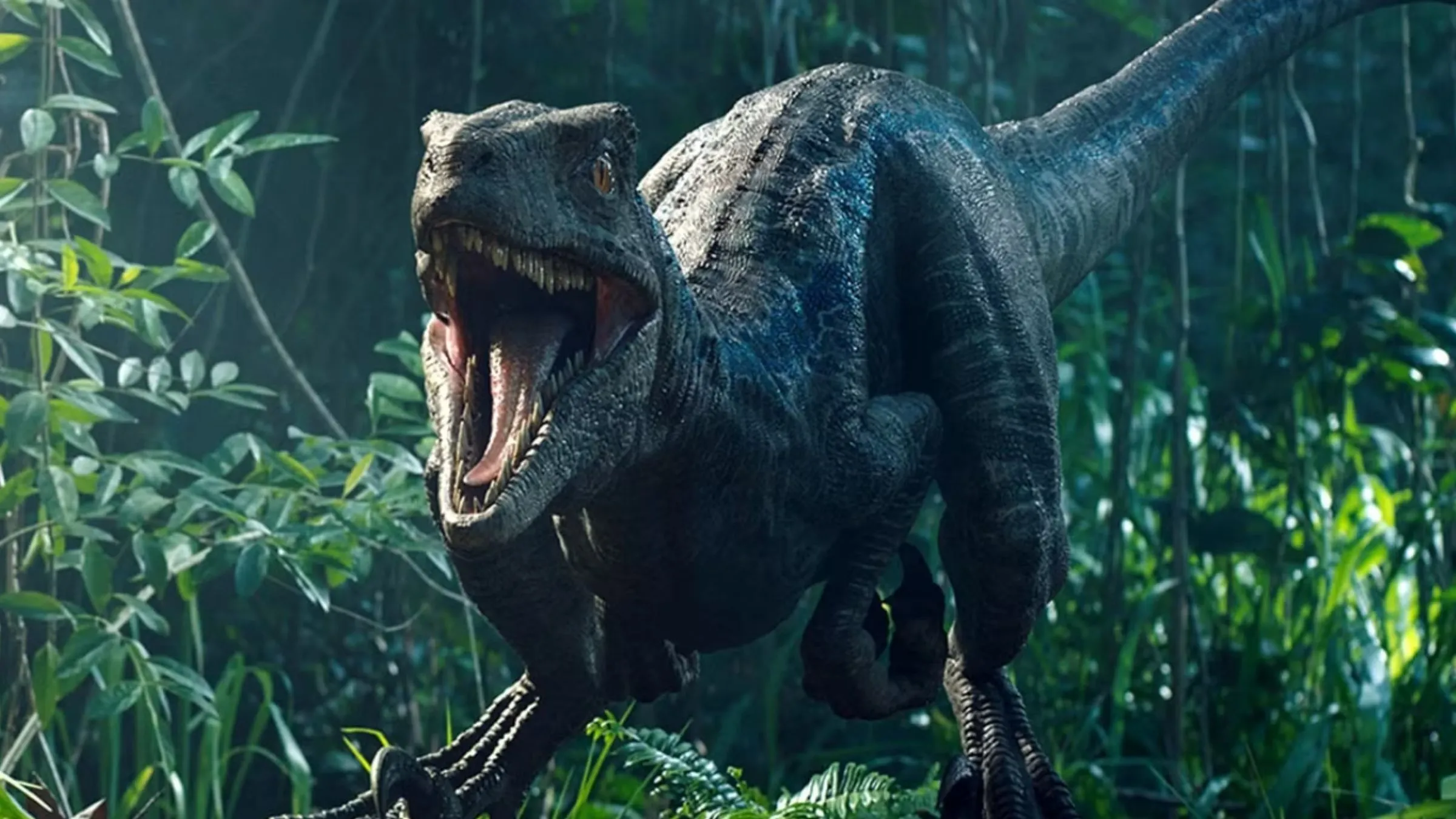
As a devoted cinephile who’s captivated by the magic of dinosaurs on the silver screen, I can’t help but appreciate the pivotal role Velociraptors play in the Jurassic Park and Jurassic World series. Over time, these fearsome creatures have undergone multiple transformations within the franchise, first appearing in Michael Crichton’s novel Jurassic Park and its sequel, The Lost World. Their debut on the big screen came with Steven Spielberg’s adaptation of Jurassic Park in 1993, where they were described by Dr. Alan Grant (Sam Neill) as highly intelligent dinosaurs with an uncanny knack for orchestrating coordinated attacks on their prey, working seamlessly as a team. In Jurassic Park III, we even discovered that Raptors are capable of communicating vocally with one another, making them all the more terrifying and formidable.
Ever since their debut in “Jurassic Park,” Raptors have graced the big-screen for every film in the series, and each appearance brought a fresh new design. Sometimes, these changes were meant to amplify their fearsome image, while other times they were crafted to portray them as more heroic and playful, yet always retaining their signature hunting skills and intelligence. Here are the top 7 Velociraptor designs from the “Jurassic Park” franchise that you shouldn’t miss.
7) Jurassic Park III (2001) – Female Raptor
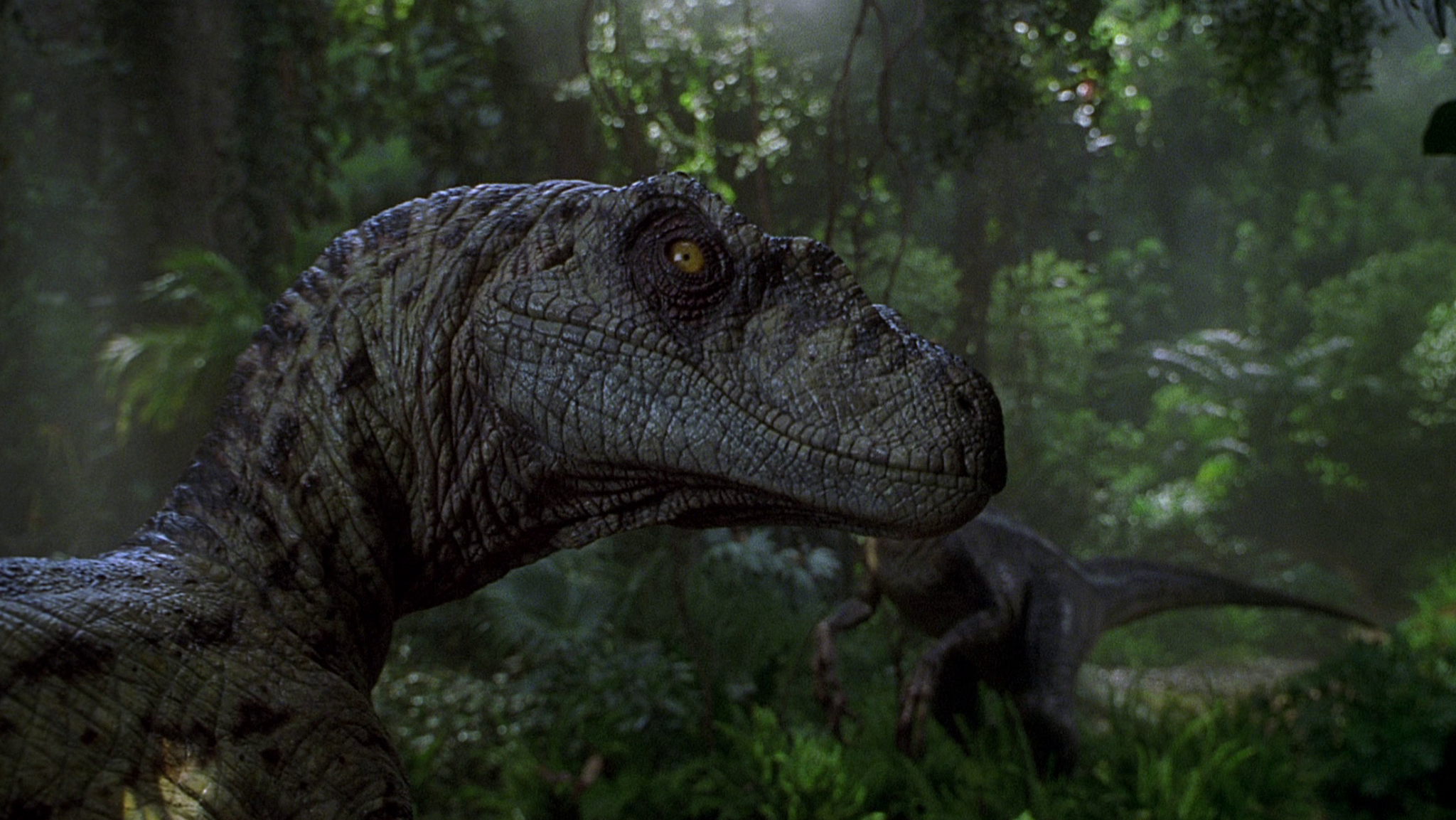
Apart from the male Velociraptors depicted in “Jurassic Park III”, the film also features some female Raptors within its primary family. Unlike their male counterparts, these females have a unique design. While all Raptors are reimagined with a new green color scheme that includes patches and ridges of assorted colors across their bodies, the female Raptors lack the quills sported by their male kin. The reason for this is not explicitly stated in the movie, but it could be to make the concept of feathered dinosaurs more palatable for viewers. Despite this change, the fearsome nature of these female Raptors remains undiminished in “Jurassic Park III”, and they are as protective of their young as one would anticipate.
6) Jurassic World Dominion – Beta (Blue’s Baby)

In “Jurassic World: Dominion,” Blue’s young raptor shares a striking resemblance with his father, sporting blue stripes down his spine and a predominantly green body with various bumps and color patches. Just like Blue, the baby is designed to reflect the Velociraptors’ intelligence and the loyal, canine-like affection they have for Grady, as well as their growing heroic role in the Jurassic World series. Under the tutelage of a father like Blue, this young raptor could potentially become an exceptional successor, maintaining the same color scheme to distinguish him from other Velociraptors within the franchise.
5) Jurassic World (2015) – Trained Raptors

In “Jurassic World”, Blue isn’t the sole Velociraptor; instead, Owen Grady is seen training an entire group of these intelligent dinosaurs. Although Blue stands out in terms of design and character, the other Raptors share a green coloration with some multi-colored spots that look like military camouflage. Just like Blue, these other Raptors have a more dog-like appearance, suggesting their loyalty to trainer Owen Grady. However, they remain Velociraptors at heart, which means entering their enclosure is always risky, even for their trainer, Grady.
4) Jurassic Park III – Male
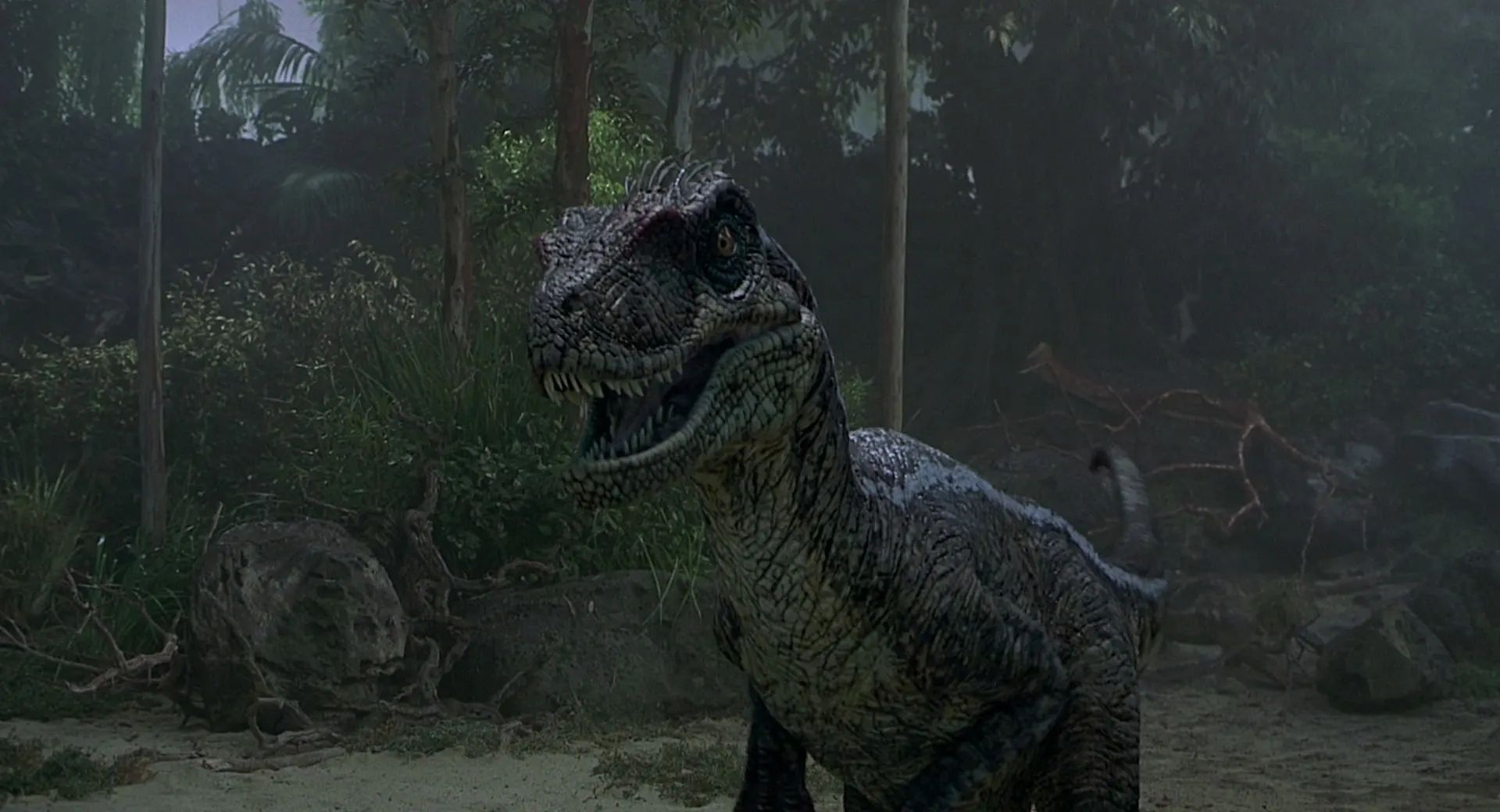
Continuous advancements in dinosaur research uncover new insights, such as the discovery between 1997’s “The Lost World” and 2001’s “Jurassic Park III” that Velociraptors were actually feathered predators. To incorporate this finding, Stan Winston updated his Velociraptor designs by adding quills on the head crests of male Raptors for a revised appearance. Interestingly, these modified male Raptors also sported a traditional reptilian color palette with more green and multicolored streaks, as well as small bumps on their bodies. The Jurassic Park franchise has consistently managed to blend scientific facts with imaginative storytelling since its beginnings, and the male Raptors in “Jurassic Park III” serve as one of the most striking examples of this approach.
3) Jurassic Park (1993)
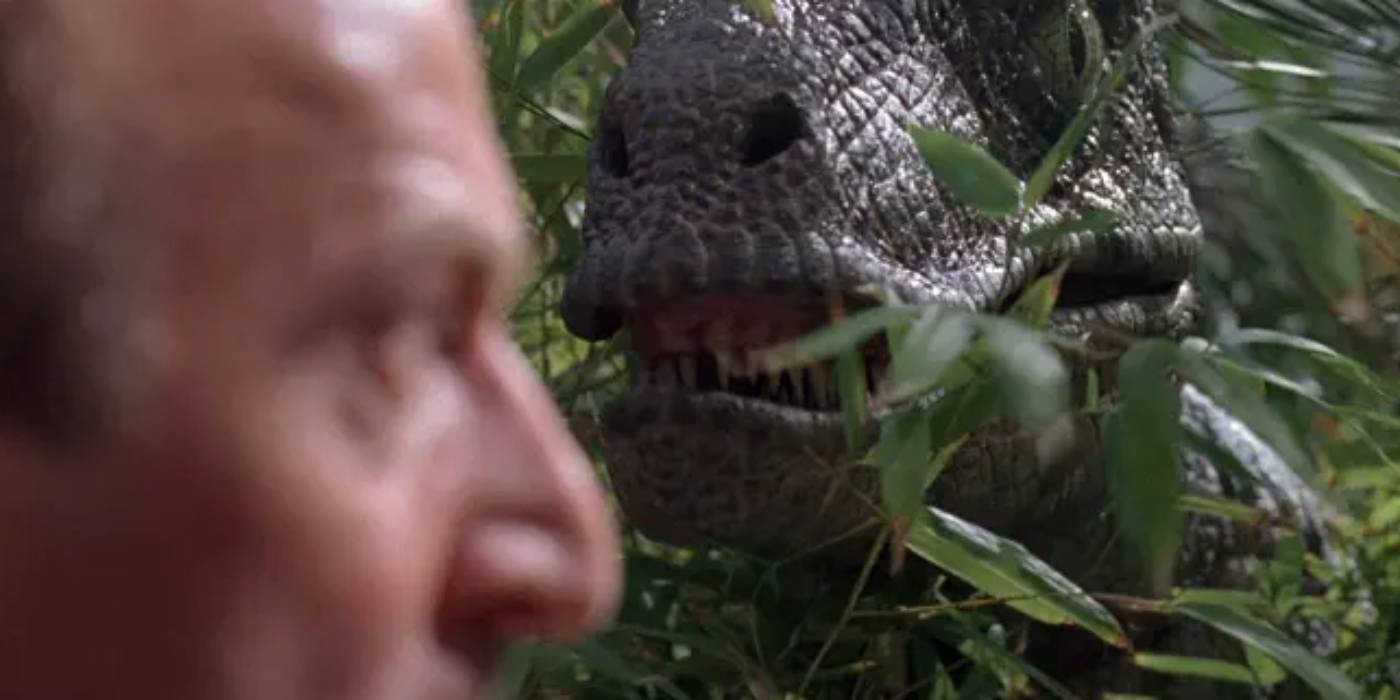
As a movie enthusiast, I must confess that the design of the Velociraptors in “Jurassic Park” remains unparalleled in the realm of scary, swift dinosaurs. Under the visionary guidance of Stan Winston, these creatures were more monstrous and menacing than their contemporaries, a testament to their enduring terror even after three decades. The film’s creators paid meticulous attention to the Raptor’s fearsome features, such as its razor-sharp teeth and claws, effectively portraying them as cunning, intelligent predators with an imposing, intimidating appearance.
2) The Lost World: Jurassic Park (1997)

In “The Lost World: Jurassic Park” from 1997, Velociraptors play a less prominent role, but they are striking due to their more feral appearance, resembling tigers. Contrasting the covert Raptors in “Jurassic Park”, the Raptors of “The Lost World” camouflage themselves until the very moment of attack, at which point their new design becomes vividly apparent, almost glowing with intensity. This is a thoughtful detail that makes their brief appearance in the third act of “The Lost World” impactful. Despite having less screen time, the dinosaurs remain as intelligent and swift, but with a fresh color scheme to make their return truly unforgettable.
1) Jurassic World – Blue
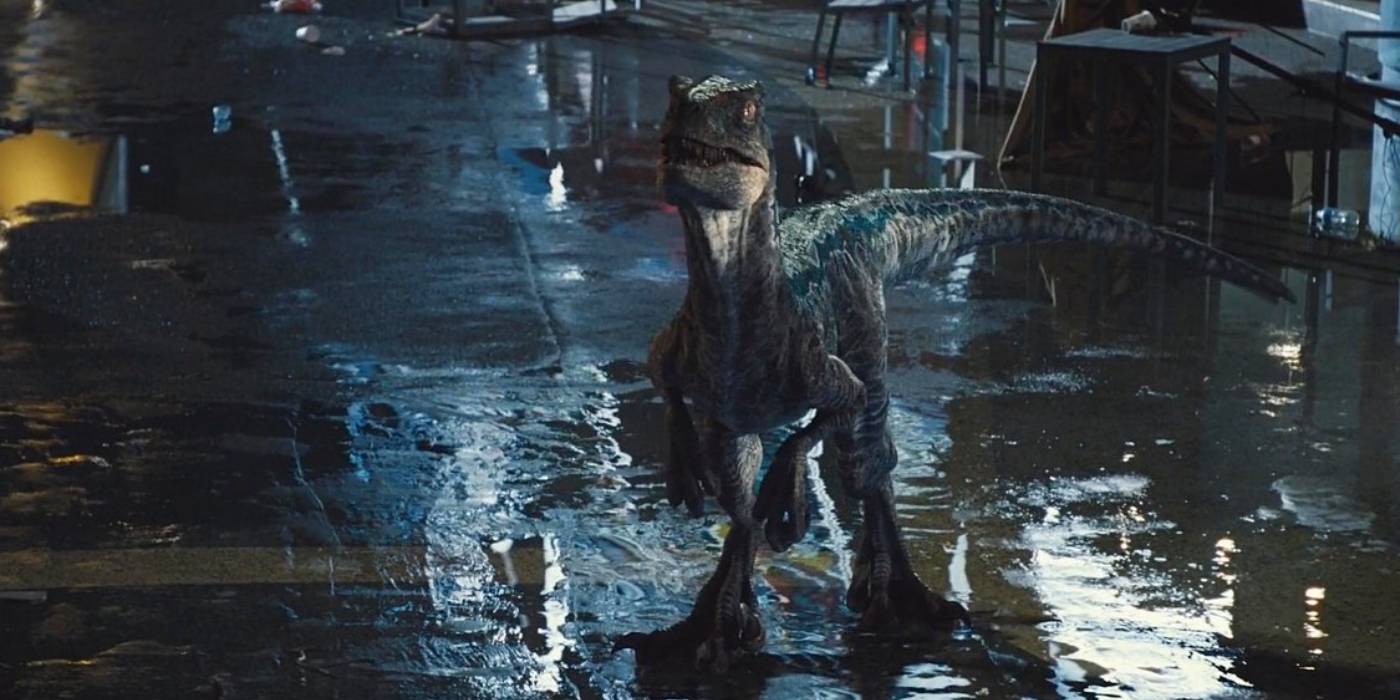
2015’s “Jurassic World” brought back the Jurassic Park series, much like its dinosaur characters, after a long hiatus. It also introduced us to Blue, the most beloved Velociraptor of all time. Trained by Owen Grady, a Raptor specialist, Blue got his name from the distinctive blue stripes on his back, a unique feature in the Jurassic Park franchise. These stripes make him easily recognizable. Blue’s design is less aggressive than previous Raptors, portraying him as noble and intelligent, with a loyalty similar to a dog towards its master. This design has remained consistent throughout the “Jurassic World” films, helping to establish Blue as the most famous Velociraptor in movie history.
Jurassic World Rebirth will be released in theaters on July 2.
Read More
- Jujutsu Kaisen Reveals New Gojo and Geto Image That Will Break Your Heart Before the Movie!
- Gaming News: Why Kingdom Come Deliverance II is Winning Hearts – A Reader’s Review
- PI PREDICTION. PI cryptocurrency
- We Ranked All of Gilmore Girls Couples: From Worst to Best
- How to Get to Frostcrag Spire in Oblivion Remastered
- Why Tina Fey’s Netflix Show The Four Seasons Is a Must-Watch Remake of a Classic Romcom
- Whale That Sold TRUMP Coins Now Regrets It, Pays Double to Buy Back
- Taylor Swift Denies Involvement as Legal Battle Explodes Between Blake Lively and Justin Baldoni
- S.T.A.L.K.E.R. 2 Major Patch 1.2 offer 1700 improvements
- Assassin’s Creed Shadows is Currently at About 300,000 Pre-Orders – Rumor
2025-05-21 01:48